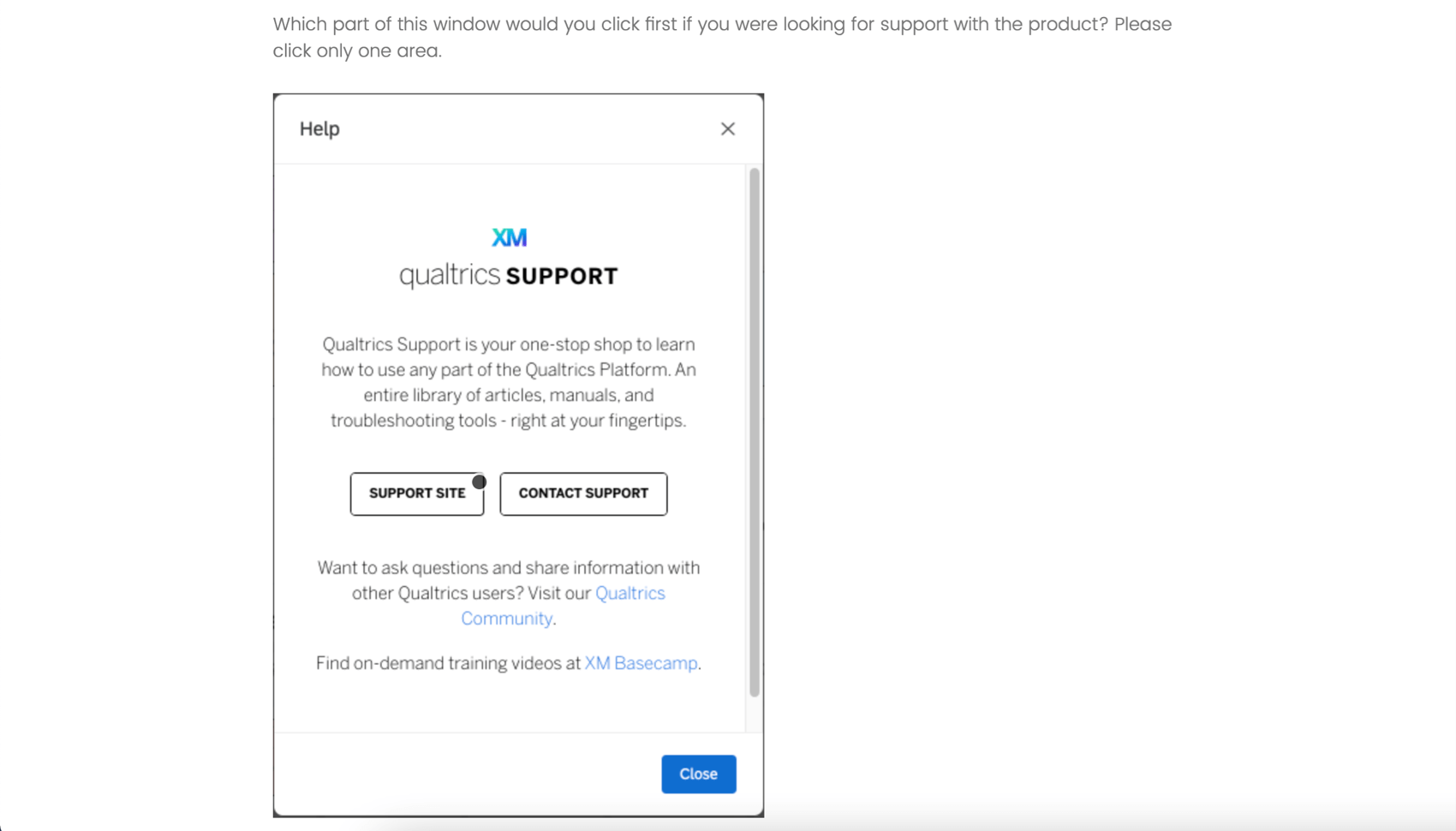Heat Map Question
About Heat Map Questions
The heat map question type is used to gather feedback on images. The respondent is presented with an image and invited to click anywhere on that image. Unlike the hot spot question, respondents are not limited to selecting pre-determined regions of the image. However, you can still add hidden regions for reporting purposes.
Setting Up a Heat Map Question
- Click Add new question.
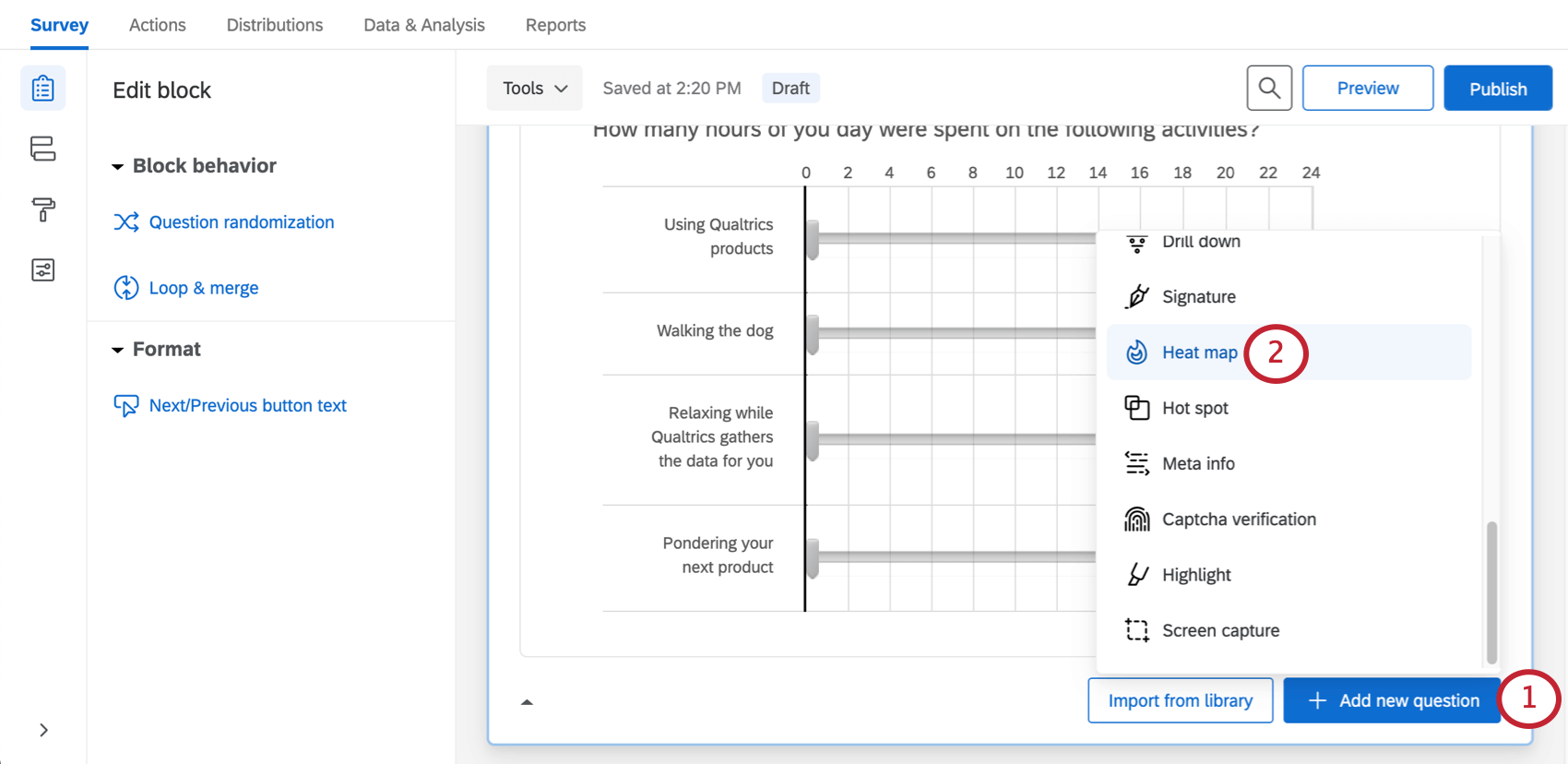
- Select Heat map.
- Add a graphic, either by clicking Choose graphic in the editing pane, or clicking Select a graphic to use in this question.
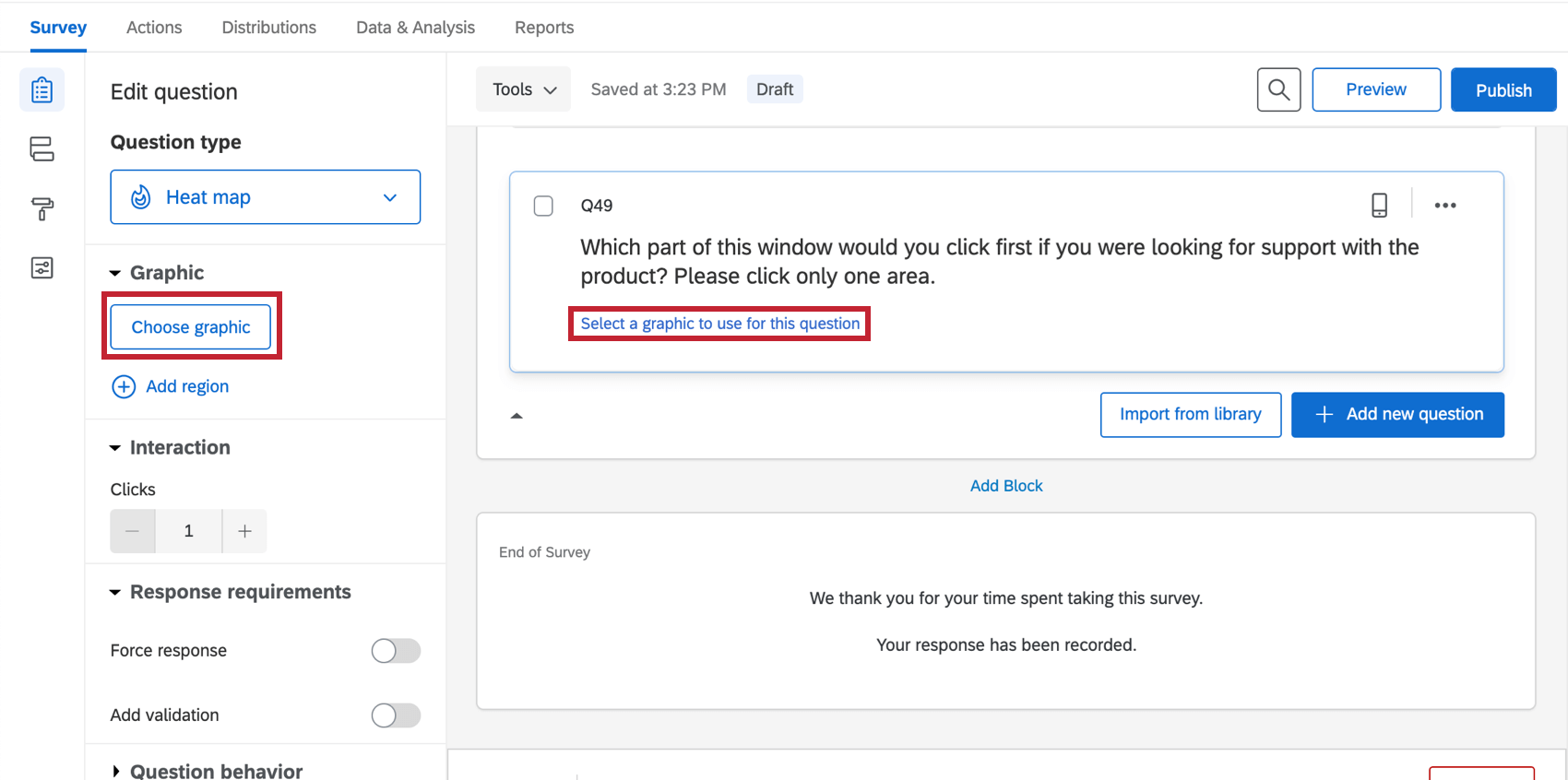
- Select a graphic you’ve already uploaded to your library, or upload a new one from your computer.
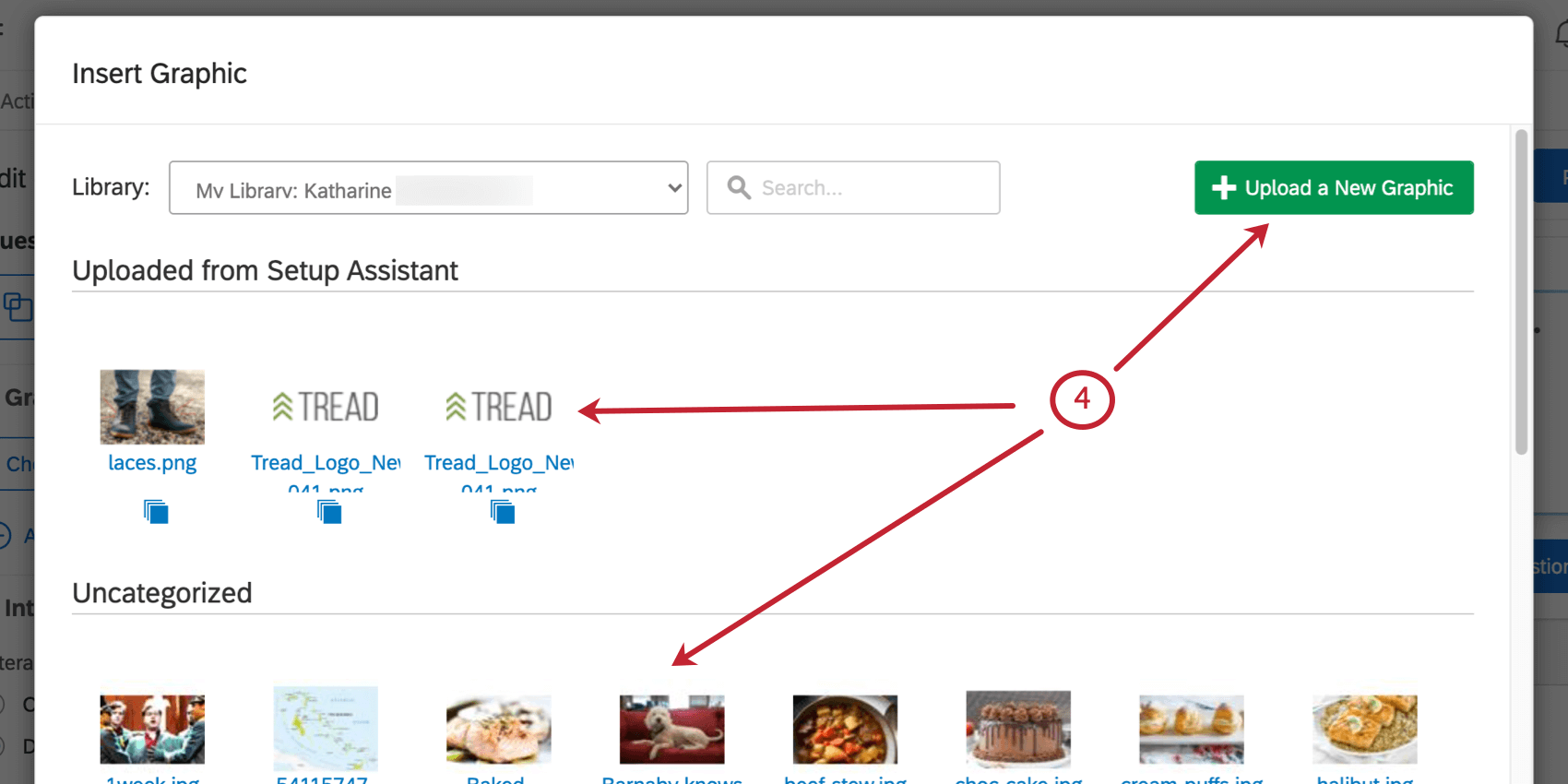
- Under Interaction, set the number of times the respondent can click the image (“1” is the default).
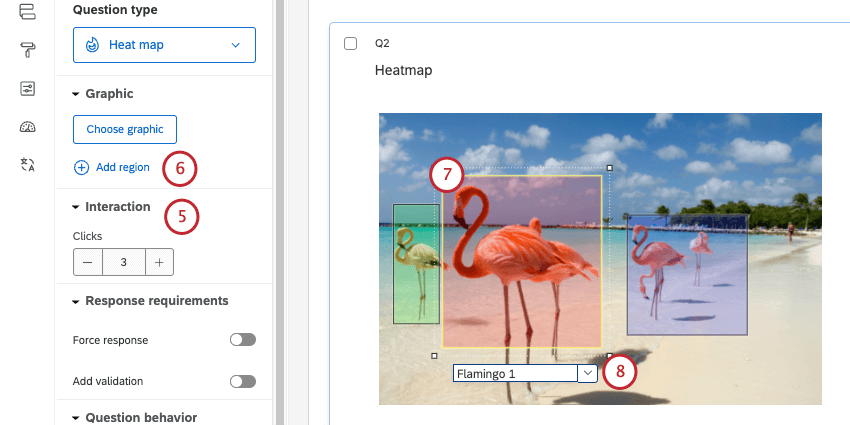 Qtip: If the respondent clicks more than the allowed number of times, their oldest click will be replaced with the newest one.
Qtip: If the respondent clicks more than the allowed number of times, their oldest click will be replaced with the newest one. - If desired, click Add region.
Qtip: Regions are not required for a heat map question, but they can make reporting easier. Rather than reporting just the coordinates of each click, Qualtrics can report the number of respondents who click in each defined region.
- Click and drag the region to move it, or click and drag the corners to resize it.
- Click the text box beneath the region to type a region name.
Qtip: This name will not display to respondents, but will be used in your survey results.
- Repeat steps 3–5 to add all desired regions.
Custom Region Shapes
By default, all regions are rectangles. In certain scenarios, however, you may need different region shapes. For example, on a map, you may need a freeform region shape to cover a specific city or county.
Editing region shapes is the same with a hot spot as it is with a heat map. See the instructions on the Hot Spot support page for more information.
Data Analysis
Once your responses have been collected, Qualtrics offers various ways you can analyze your response data. You can view and manage individual respondents’ data, export a spreadsheet of data, or create printable reports to share with stakeholders.
Downloaded Data Format
In the exported dataset, 2 columns will be provided for each click participants were allowed to make on the image. 1 column will include the x-coordinates of each click (column Q1_1_x in the image), and the other will include the y-coordinates of each click (column Q1_1_y in the image), both measured in pixels.
If regions were added on the heat map question, an additional column will be included to indicate the chosen region.
Viewing Individual Responses
You can view an individual response in the Data & Analysis tab and export the response to PDF. When viewing an individual response to a heat map, a small white dot will show where the respondent clicked. 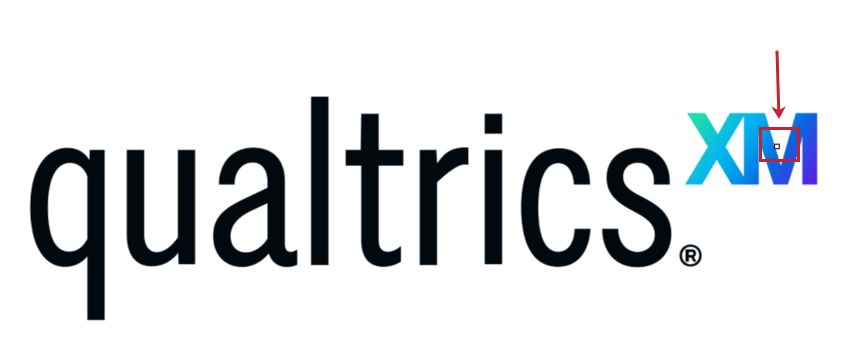
Reporting on Heat Map Data
In the Reports tab, the heat map visualization will display the most to least clicked areas.If you added regions, you can also use the data table, results table, bar chart, line chart, pie chart, or breakdown bar.
If you plan to use Results Dashboards, we recommend using regions with your heat map. You can then report on how often specific regions were clicked, and report on data such as average number of clicks. For region reports, you can use widgets that are compatible with categorical data, such as horizontal bars, vertical bars, lines, and donut / pie charts.
If you don’t use regions, you cannot report on heat map data in Results Dashboards.
